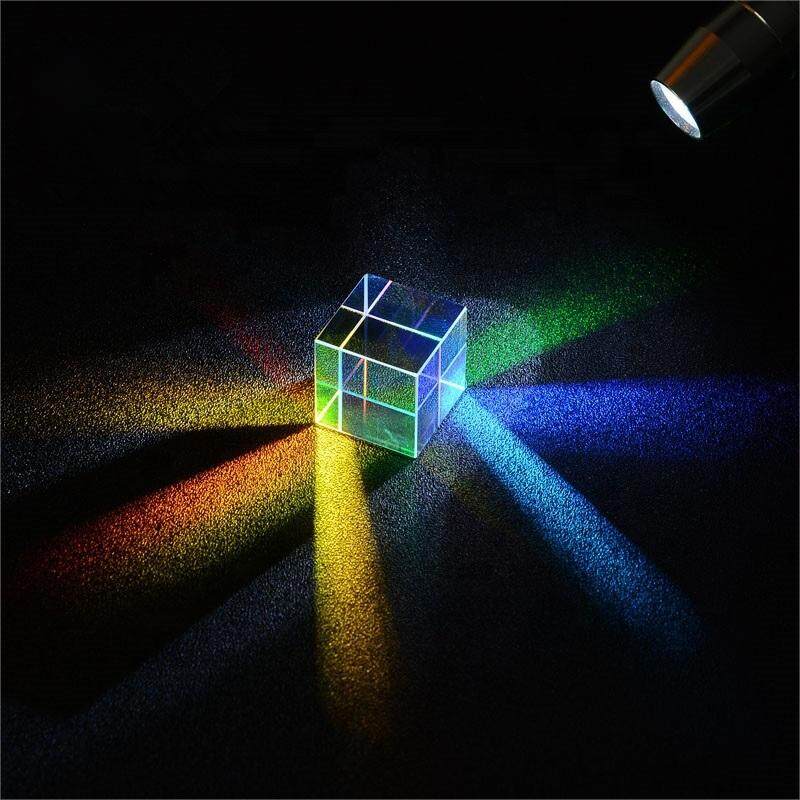이메일 형식 오류
emailCannotEmpty
emailDoesExist
pwdLetterLimtTip
inconsistentPwd
pwdLetterLimtTip
inconsistentPwd


Demystifying Dichroic Prisms: How Do They Work?
Dichroic prisms are essential components in many optical systems, offering unique properties that make them invaluable in various applications. These prisms, also known as beam splitters, play a crucial role in separating light based on its wavelength. In this blog post, we will demystify dichroic prisms and explore how they work to provide tailored solutions for optical systems.
Understanding Dichroic Prisms:
Dichroic prisms are optical devices that utilize the principle of selective wavelength reflection and transmission. They consist of multiple layers of dielectric coatings that are carefully designed to reflect certain wavelengths of light while transmitting others. This selective behavior allows dichroic prisms to split incident light into two or more beams based on their wavelengths.
Principle of Operation:
The operation of dichroic prisms is based on the interference of light waves. When light passes through the multiple layers of dielectric coatings, some wavelengths experience constructive interference and are reflected, while others experience destructive interference and are transmitted. This selective reflection and transmission result in the separation of light into different beams.
Applications of Dichroic Prisms:
Color Separation: Dichroic prisms are commonly used in color separation applications, such as in digital projectors and cameras. By separating the incident white light into its primary colors (red, green, and blue), these prisms enable accurate color reproduction and vibrant images.
Laser Systems: Dichroic prisms are crucial components in laser systems, where they are used to separate different laser wavelengths or combine multiple laser beams. This allows for precise control and manipulation of laser light in applications such as laser scanning, spectroscopy, and laser-based manufacturing.
Fluorescence Microscopy: In fluorescence microscopy, dichroic prisms are used to separate excitation and emission wavelengths. They reflect the excitation light towards the sample while transmitting the emitted fluorescence, enabling clear visualization of fluorescently labeled structures.
Optical Communication: Dichroic prisms find applications in optical communication systems, where they are used for wavelength division multiplexing (WDM). By separating different wavelengths of light, these prisms enable the simultaneous transmission of multiple data channels over a single optical fiber.
Conclusion:
Dichroic prisms are versatile optical components that play a crucial role in various applications. By selectively reflecting and transmitting light based on its wavelength, these prisms provide tailored solutions for color separation, laser systems, fluorescence microscopy, and optical communication. As a trusted dichroic prism wholesaler, we are committed to delivering exceptional quality and service. Contact us today to discuss your specific needs and discover how our dichroic prisms can enhance your optical systems.


